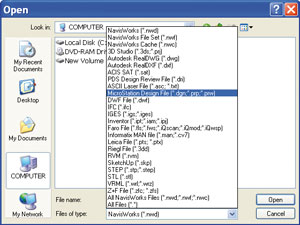Using 3D printing technology from Z Corporation, a German architecture firm famous for building state-of-the-art Formula 1 race circuits can now create precision 3D colour models of new building concepts and proposed track layouts.
Fifty years ago motor races were typically staged on disused aerodromes or closed stretches of public roads. These days motor sport is an international business especially Formula 1 where countries and cities compete to host one of only 18 or so races held annually around the world. Those aspirants who are granted the opportunity often commission stunning new circuits to ‘wow’ visitors and to impress the global media. Modern F1 motor racing circuits are akin to small cities. Many have hotels, bars and restaurants, shopping areas and hospitality and media amenities, not to mention the usual facilities necessary to accommodate the F1 ‘circus’ and its fans.
To make matters more complicated for the designers, the topography of a typical race circuit can be anything but flat, with hills, crests and drops all intended to make the track more challenging for the drivers and the race more spectacular for the audience. Building accurate models of a proposed new circuit, including faithful representations of the site, has, until now, been extremely time-consuming and very expensive.
German architectural and engineering firm Tilke has been designing Formula 1 circuits and on-site facilities since 1994. At one of its two offices in Aachen the company uses a Z Corporation Spectrum Z510/cx to build precision 3D colour models of proposed F1 circuits. One of the architects working at the conceptual stage of new projects is Bettina Noppeney.
“Before we had the Spectrum Z510/cx, topography was very difficult to model, as were complex building structures and details,” she said. “Now, using images, we are able to print 3D colour models of the track and its surrounding area. We can also print finely detailed 3D models of the many buildings we design, which make up the circuit complex.”
The Spectrum Z510/cx 3D printer is ideally suited to the office environment. It eliminates nearly all of the hazards, waste, noise, and disposal issues that are associated with typical rapid prototyping systems and is a compact machine, which needs little space to operate.

The man responsible for running the company’s Spectrum Z510/cx is Franz Schleibach. Working with the firm’s architects and engineers he provides 3D models of everything from structural components and electro-mechanical assemblies to large-scale composite layouts of a proposed site.
“Using the Spectrum Z510/cx we can present the client with an entire model of a proposed F1 complex. Before we invested in the Z Corp machine, we had to show the concept in 2D. When a client can see a model in 3D — and is able to physically pick up buildings, see how they are positioned relatively to one another and how they fit into the landscape — the effect is much more impressive.”
Tilke was founded by Hermann Tilke; a one-time racing driver with a background in civil engineering, and his Partner Peter Wahl. Twenty-four years later Tilke employs more than 200 people and has overseas offices in Mexico, Singapore, Abu Dhabi and Bahrain. Today, the company’s expertise is in demand by clients also wishing to build unique sports facilities and clubs, including owners of private racetracks, golf courses and equestrian centres. Like motor racing circuits, topography is a major consideration for such projects.
“Even on the large, hand-made models we often need decorative details or extra elements to enhance our presentation,” said Mr Schleibach. “For example, we can find objects online, which we can download as 3D CAD files and print using the printer.” The Spectrum Z510/cx allows designers to output models in hours, not days, and build multiple models at the same time by stacking and nesting parts. “The result is that it takes a lot less time and money to build a large model.”
3D models and product prototypes are about communication, and nothing communicates better than colour, which vividly renders architectural designs and landscapes. The Spectrum Z510/cx allows firms like Tilke to produce realistic colour models without paint and to better evaluate the look, feel and style of designs. “As well as improving our model making process, the Spectrum Z510/cx has allowed us to pitch for projects in new areas,” said Mrs Noppeney.
“We can also produce concepts much more quickly and to higher standards of finish. The machine has changed the way we explore ideas and how we present to clients.”






